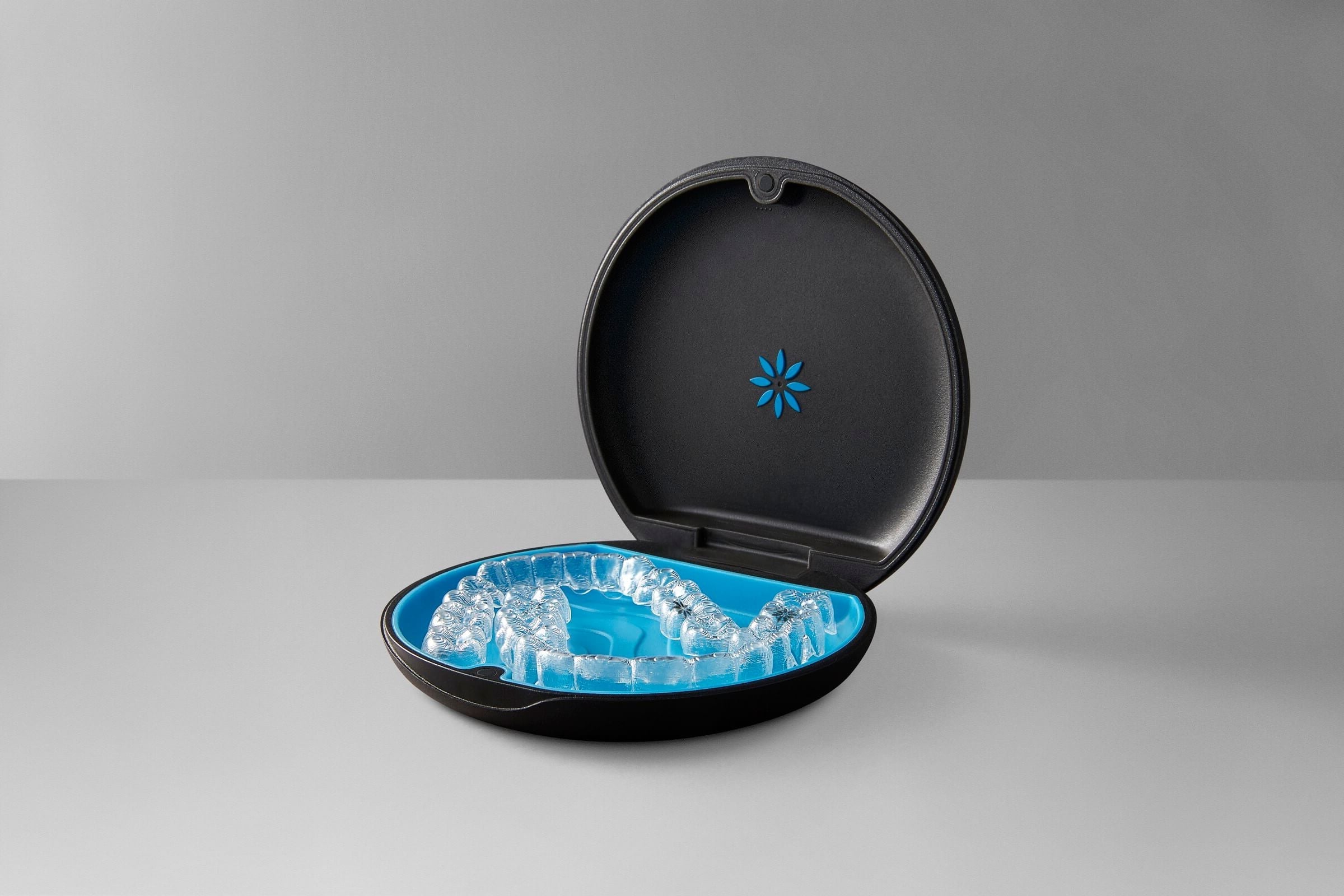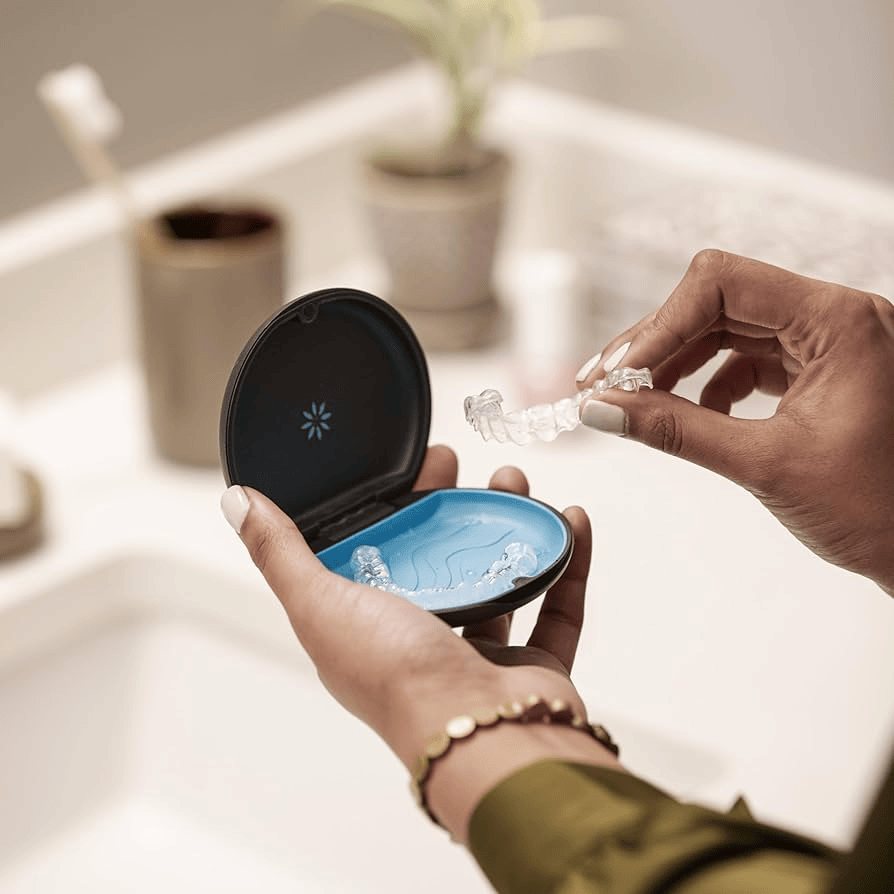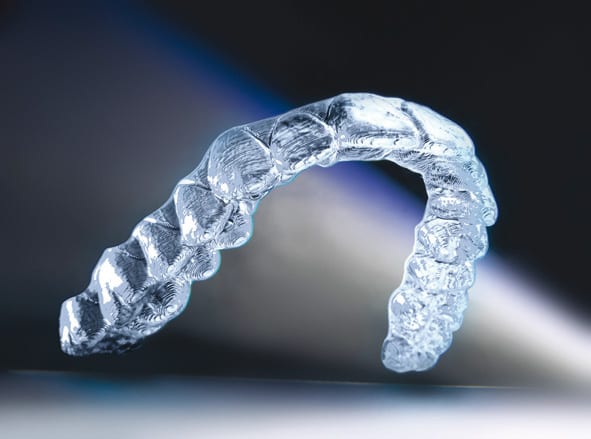Invisalign clear aligners continue to be one of the most popular choices for teeth straightening in New York and New Jersey. But with the average cost of Invisalign often ranging from $2,400 to $8,000, many patients are asking an important question: Does insurance cover Invisalign?
Table of contents
Invisalign Cost — And How Can Insurance Help
Consider insurance when planning Invisalign treatment
Invisalign braces offer advantages that go far beyond what traditional teeth braces provide. From nearly invisible aligners to easier cleaning and no dietary restrictions, Invisalign aligners are designed to be comfortable, discreet, and highly effective for both adults and teens. However, these benefits come with a higher price tag than conventional clear braces or metal braces. Understanding how much does Invisalign cost with insurance—and which plans offer Invisalign insurance—can help you manage your out-of-pocket costs.
Key benefits of Invisalign aligners:
Removable for eating, drinking, brushing, and flossing
Clear, nearly invisible appearance compared to braces for teeth
Comfortable SmartTrack™ material reduces irritation
Fewer emergency visits compared to broken wires or brackets
Invisalign Treatment Costs Without Insurance
How much is Invisalign without insurance?
The cost of Invisalign treatment without insurance ranges from approximately $2,400 to $8,000, depending on the complexity of your case and the treatment plan recommended by your Invisalign orthodontist. The Invisalign price may also vary based on your location—NY and NJ rates can trend higher than national averages. Fortunately, many Invisalign providers offer flexible monthly payment plans to help make Invisalign aligners more affordable if you're paying out-of-pocket.

Are there other ways to reduce Invisalign costs?
Yes. If you're wondering how to get Invisalign for less, flexible spending accounts (FSA) or health savings accounts (HSA) can be used to pay for Invisalign in New York and New Jersey. In addition, certain state-sponsored dental insurance plans and private dental networks may partially cover Invisalign treatment, helping to lower your costs. It's always wise to consult your Invisalign provider about payment options and to contact your insurance provider for Invisalign coverage specifics.

Popular Insurance Plans that Cover Invisalign
While Invisalign treatment may never be fully covered, certain insurance plans can help offset part of the cost. If you’re asking, Will insurance cover Invisalign?, the answer depends on your dental insurance provider, policy, and whether you meet their eligibility requirements. Below is an overview of several well-known insurance options in NY and NJ and how they handle Invisalign coverage.
Humana Dental Invisalign coverage
Many Humana dental plans include orthodontic services that cover Invisalign aligners for both adults and children. However, Humana policies typically do not cover treatment already in progress—so it’s important to confirm your coverage before starting Invisalign treatment. Your Invisalign dentist near me can also help verify your eligibility and coordinate with Humana to ensure you maximize your Invisalign insurance benefits.
Aflac Dental and Invisalign benefits
Aflac offers orthodontic coverage for Invisalign through its Orthodontic Benefit Rider, though it comes with a 24-month waiting period before benefits apply. Once eligible, patients can receive partial coverage toward Invisalign aligners and treatment costs. It’s important to understand that Aflac coverage varies by location and plan. If you’re considering Invisalign clear aligners through Aflac Dental, speak with your Aflac provider and your Invisalign orthodontist to clarify your coverage and treatment timing.

MetLife Dental Insurance and Invisalign Aligners
Does MetLife cover Invisalign?
MetLife dental insurance may cover Invisalign treatment when performed by a qualified Invisalign provider. The best MetLife plans for Invisalign coverage are typically PPO plans, which offer more flexibility and a broader network of Invisalign orthodontists. MetLife’s HMO dental plans in NY and NJ generally do not cover Invisalign aligners, so choosing a PPO plan is recommended if you are pursuing Invisalign treatment.
What else should MetLife patients know about Invisalign costs?
MetLife’s PPO plans often provide partial coverage for orthodontic treatment, which may include Invisalign aligners. However, Invisalign patients should note that some MetLife plans cap lifetime orthodontic benefits, so it’s important to ask your Invisalign provider to check your benefits before starting treatment. By planning ahead, you can ensure you maximize your MetLife Invisalign insurance benefits and reduce your out-of-pocket Invisalign costs.
Does Medicaid Cover Invisalign in NY and NJ?
Can Medicaid help pay for Invisalign treatment?
For patients seeking affordable teeth straightening, Medicaid can be an option—but coverage for Invisalign is very limited. Medicaid in NY and NJ may cover traditional metal braces in cases of medical necessity (such as correcting bite or jaw issues), but invisible braces like Invisalign are typically considered cosmetic and are not routinely covered. That said, some patients may qualify if an orthodontist can document that clear aligners are medically necessary. Your Invisalign provider can help submit proper documentation if needed.
Key points about Medicaid insurance and Invisalign coverage:
- Traditional braces often covered under Medicaid for medical necessity
- Invisalign coverage under Medicaid is rare and case-specific
- Medicaid may approve clear aligners if medically necessary
- Invisalign orthodontist must provide proper documentation
- Consult both your Medicaid plan and Invisalign provider first
How Do FSAs and HSAs Help Pay for Invisalign?
If you’re wondering how to get Invisalign more affordably, flexible spending accounts (FSAs) and health savings accounts (HSAs) offer a smart solution. Both accounts allow you to use pre-tax dollars to pay for qualified medical and dental expenses—including Invisalign aligners. This can significantly reduce your out-of-pocket Invisalign costs. Whether you are purchasing Invisalign for teens or adults, using an FSA or HSA can stretch your budget further and help you cover expenses insurance doesn’t.
The Best Ways to Reduce Invisalign Costs in NY and NJ
While Invisalign aligners offer transformative benefits, the Invisalign price can feel intimidating. The good news: there are ways to manage the cost of Invisalign treatment and make clear aligners more affordable. Combining insurance benefits with payment plans, FSAs/HSAs, and choosing the right Invisalign provider can help you straighten teeth without breaking the bank.
Tips to save money on Invisalign in NY and NJ:
- Choose an Invisalign orthodontist with transparent pricing
- Ask if your dental insurance plan covers Invisalign treatment
- Use your FSA or HSA to cover out-of-pocket Invisalign costs
- Look for Invisalign promotions or discounts at your provider
- Explore flexible payment plans to manage monthly Invisalign payments
Risks to Choosing Cheaper Invisalign Alternatives
While the average cost of Invisalign may seem higher than some mail-order or “fast” aligner kits, the risks of cheaper Invisalign alternatives are well documented. Many at-home teeth straightening kits skip critical steps—like dental x-rays, bite analysis, and in-person monitoring—leaving patients vulnerable to tooth damage, gum issues, and unstable results.
Invisalign aligners, by contrast, are backed by Align Technology’s advanced materials and designed with precise 3D scans under the guidance of a certified Invisalign orthodontist. Professional Invisalign treatment also includes high-quality Invisalign retainers to maintain your new smile. Cutting corners on clear aligners may save upfront costs but can ultimately lead to expensive retreatment or long-term oral health problems.
Cheaper isn’t always better with clear aligners.
With the rise of at-home aligners and mail-order teeth aligners at home, some patients are tempted by lower prices. But cheaper Invisalign alternatives can pose serious risks. DIY aligner kits often lack professional supervision, x-rays, and treatment planning by a qualified Invisalign orthodontist. Without expert guidance, there is a higher risk of poor results, gum problems, and even permanent bite damage. Choosing Invisalign clear braces in an orthodontist’s office ensures a safer, more effective treatment.
Risks of DIY or cheap clear aligner options:
Lack of x-rays and dental exams before treatment
No monitoring by an Invisalign provider or orthodontist
Higher risk of bite misalignment or gum recession
Poorly fitting clear aligners can damage teeth
No professional Invisalign retainers or follow-up care
How do I choose the right Invisalign provider?
Choosing an experienced Invisalign orthodontist is key to achieving the best Invisalign before and after results. Look for a Diamond Invisalign provider near me, as these providers have extensive experience with Invisalign treatment. Also, verify that your orthodontist offers comprehensive Invisalign services—including Invisalign attachments, Invisalign elastics if needed, and a full post-treatment Invisalign retainer plan. A reputable Invisalign provider will guide you through every step, helping you achieve a straighter, healthier smile.
What to look for in an Invisalign provider:
Verify Invisalign provider level (Diamond+ is ideal)
Ask if Invisalign costs include x-rays and iTero scans
Ensure provider offers Invisalign Express if you qualify
Confirm post-treatment retainers are included
Check Invisalign reviews and patient testimonials
How much will my insurance cover for Invisalign?
Insurance coverage for Invisalign treatment typically ranges from 25% to 50% of the total Invisalign cost, depending on the dental plan. Most orthodontic insurance benefits include a lifetime maximum—usually between $1,000 and $3,000—that applies to all orthodontic care, including Invisalign clear aligners. Before insurance starts paying toward Invisalign, patients may also need to meet a deductible. It’s important to confirm your exact Invisalign insurance benefits with your provider to understand how much of your Invisalign treatment will be covered.
How to get Invisalign if you can't afford it?
If you’re concerned about how to get Invisalign when costs feel out of reach, several options can make treatment more affordable. Start by reviewing your dental insurance plan to see if orthodontic benefits apply to Invisalign aligners. Next, consider using pre-tax dollars from a Health Savings Account (HSA) or Flexible Spending Account (FSA) to lower your out-of-pocket Invisalign costs. Many orthodontists also offer flexible financing or payment plans to help spread out Invisalign payments. For additional savings, some dental schools provide discounted rates on Invisalign treatment through their supervised teaching clinics.
How much does Invisalign cost in NY?
The average cost of Invisalign in New York generally falls between $4,000 and $6,800, depending on the complexity of your case and your Invisalign provider. Factors like the number of aligners required, whether Invisalign Express or full Invisalign is used, and whether you need Invisalign attachments or refinements can affect your final Invisalign price. When researching Invisalign near me in NY, it’s a good idea to request a full treatment estimate—including aligner trays, x-rays, and retainers—so you know what to expect.
Can you use health savings account for Invisalign?
Yes—you can absolutely use funds from a Health Savings Account (HSA) or Flexible Spending Account (FSA) to pay for Invisalign aligners. Since Invisalign treatment qualifies as an eligible medical expense, both HSA and FSA funds can be applied to your Invisalign costs. This can be a smart way to reduce your overall out-of-pocket expenses when pursuing Invisalign treatment. Many Invisalign patients, especially adults and teens seeking discreet options, find that using HSA or FSA funds helps make this advanced clear aligner therapy more affordable.
Conclusion
Invisalign aligners offer a proven, effective way to straighten teeth for both adults and teens—but understanding your Invisalign insurance options is key to making treatment affordable. In NY and NJ, several dental insurance plans provide partial coverage for Invisalign treatment, while FSAs, HSAs, and flexible payment plans can further reduce your costs. While cheap Invisalign alternatives may seem tempting, working with an experienced Invisalign orthodontist ensures safe, effective results and long-term smile stability. Whether you’re searching for how much is Invisalign with insurance or Invisalign near me, starting with a trusted Invisalign provider will help you make the best choice for your smile—and your budget.






